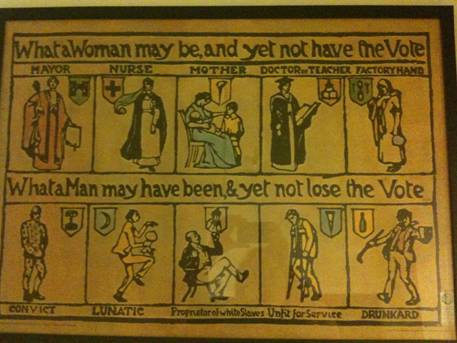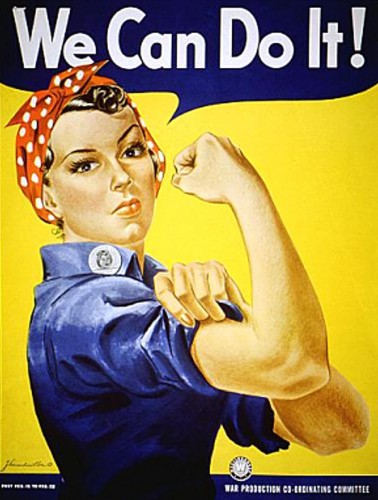The décor in my childhood home was unusual. Interspersed with photographs of my sister and me were vintage political posters, inherited from my late grandparents. The most startling of these were the posters promoting women’s right to vote: as I grew up, I realized that the viewpoints they depicted contrasted starkly with the narrative of women’s suffrage that I had learned in my history classes.
This poster supports women’s right to vote not by asserting their equality with men, but by appealing to their ability to bear children:
By contrast, this poster actively highlights woman’s ability to contribute to society beyond stereotypically female roles: women were not only nurses and mothers, but doctors and mayors. Yet at the same time, the image disparages the mentally and physically ill by painting men with these conditions as inherently lesser.
Lastly, a picture that speaks for itself. Women should have suffrage, says the poster, but they must always remember where they truly belong.
Although the right to vote politically empowered the women of Western society, many of the proponents of the women’s suffrage movement espoused ideologies that would not be considered feminist or politically correct today. My history classes dwelt only briefly on these unpalatable schools of rhetoric, but the images in my home allowed me to glimpse a debate that was just as complex and fragmented as the political disputes we face today.
———————————-
Alison Marqusee is a high school senior from Massachusetts. In addition to sociology, her interests include linguistics, psychology, and physics. She looks forward to attending Haverford College.
If you would like to write a post for Sociological Images, please see our Guidelines for Guest Bloggers.























